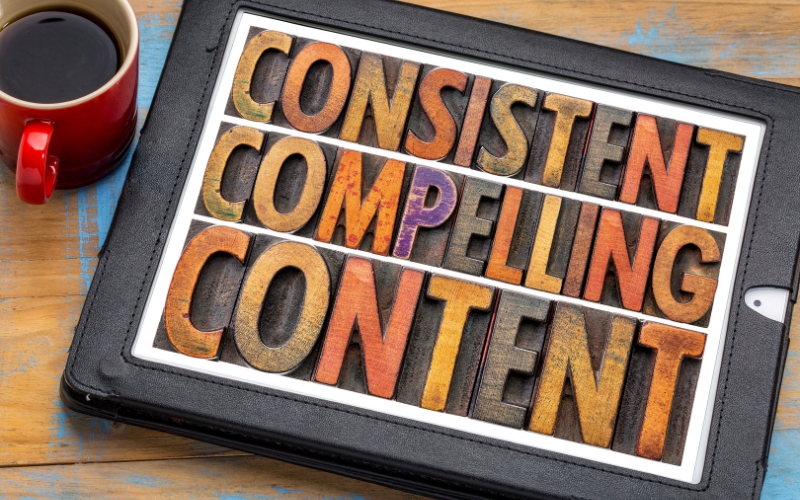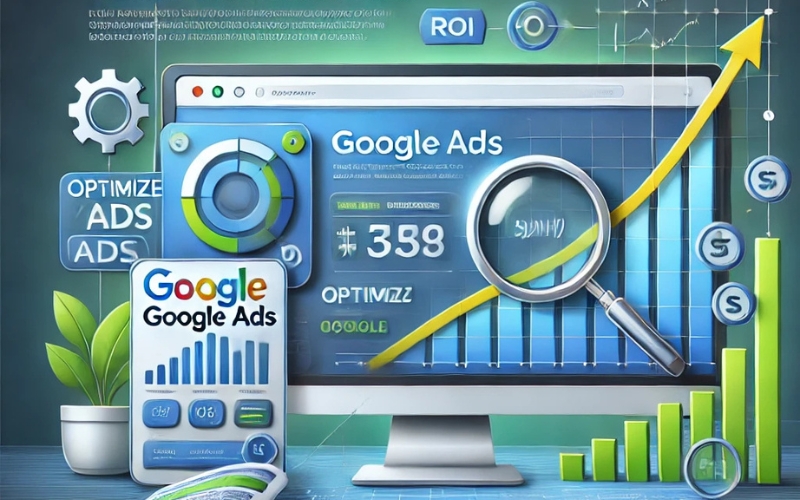Google Ads has become a cornerstone of digital marketing, enabling businesses to reach their target audience effectively. However, running a campaign isn’t enough—Optimize Your Google Ads to maximize your return on investment (ROI). From refining your keyword strategy to crafting compelling ad copy and analyzing performance metrics, every element plays a critical role in the success of your campaigns. This guide will explore actionable strategies to help you Optimize Your Google Ads for better results and achieve your marketing goals.
Perfecting Your Keyword Strategy for Cost-Effective Campaigns

To Optimize Your Google Ads for maximum ROI, you need a robust keyword strategy. Keywords are the foundation of any Google Ads campaign, directly influencing who sees your ads and how much you pay per click. By focusing on the right keywords, you can target the ideal audience, minimize wasteful spending, and increase conversions. Refining your keyword approach is essential to fully Optimize Your Google Ads for better performance and results.
Importance of Long-Tail Keywords
Long-tail keywords are extended, specific phrases that capture highly targeted search intent and help you Optimize Your Google Ads campaigns effectively. For example, instead of bidding on a generic term like “shoes,” you might focus on a long-tail keyword such as “affordable running shoes for women.” While long-tail keywords typically have lower search volume, they also face less competition, making them more cost-effective and a great way to Optimize Your Google Ads budget.
Additionally, these keywords often indicate that the searcher is closer to making a purchase decision. Someone searching for “shoes” may be browsing, but a person searching for “affordable running shoes for women” is likely ready to buy. Using long-tail keywords strategically can help you Optimize Your Google Ads to target a more motivated audience, increasing your chances of driving high-quality traffic and conversions. This targeted approach ensures you can Optimize Your Google Ads for better performance and ROI.
Using Negative Keywords to Filter Irrelevant Traffic
Negative keywords are an often-overlooked but crucial component to Optimize Your Google Ads campaign. They allow you to exclude specific search terms that aren’t relevant to your business. For example, if you’re a premium service provider, you might add “cheap” or “free” as negative keywords to avoid attracting users looking for budget solutions.
By filtering out irrelevant traffic, negative keywords help you focus your budget on searchers more likely to convert. Additionally, this improves your click-through rate (CTR) and Quality Score, which is essential to Optimize Your Google Ads performance. To truly make the most of this feature, you should regularly review your search term report to identify potential negative keywords. It’s a small step, but it can significantly help Optimize Your Google Ads for better results.
Finally, using negative keywords strategically ensures your budget is spent effectively and contributes to a highly refined strategy to Optimize Your Google Ads campaigns overall.
Tips for Conducting Thorough Keyword Research
Keyword research is the cornerstone of a successful Google Ads campaign. It ensures that you’re targeting the right audience with terms they are actively searching for. Here’s how to conduct thorough keyword research to help you Optimize Your Google Ads effectively:
- Start with Google’s Keyword Planner: This free tool helps you find relevant keywords, shows their search volumes, and provides cost estimates. Use it to identify a mix of high-volume and niche keywords to better Optimize Your Google Ads for the right audience.
- Analyze Competitors: Look at the keywords your competitors are targeting. Tools like SEMrush or Ahrefs can provide insights into what’s working for them. These insights can help you fine-tune your campaigns and further Optimize Your Google Ads performance.
- Focus on Intent: Group your keywords by search intent—informational, navigational, or transactional. Prioritize transactional keywords, as these are more likely to drive conversions and directly Optimize Your Google Ads to deliver better ROI.
- Update Regularly: Search behavior changes over time. Regularly revisiting your keyword strategy ensures it aligns with evolving trends, helping you continuously Optimize Your Google Ads for current market conditions.
- Test and Refine: Launch campaigns with a variety of keywords, then use performance data to narrow down the most effective terms. This process is critical to Optimize Your Google Ads for higher CTR, improved conversion rates, and maximum ROI.
By perfecting your keyword strategy through the use of long-tail keywords, negative keywords, and thorough research, you can significantly enhance the performance of your Google Ads campaigns. These tactics ensure that your ads reach the right audience, reduce wasted ad spend, and help you consistently Optimize Your Google Ads for success.
Crafting Compelling Ad Copy That Drives Conversions

Ad copy is one of the most critical elements in any Google Ads campaign. Even with the best targeting and bidding strategies, poorly written ad copy can fail to capture attention and drive conversions. Crafting compelling copy that resonates with your audience is key to achieving your marketing goals and maximizing return on investment (ROI). Here are actionable strategies to create ad copy that stands out.
Writing Attention-Grabbing Headlines
Your headline is the first thing potential customers see, and it plays a pivotal role in whether they engage with your ad. A powerful headline should be clear, concise, and directly address the searcher’s intent. To create effective headlines, consider the following tips:
- Incorporate Keywords: Use the primary keyword in your headline to ensure relevance and appeal to the searcher. For example, if your ad targets the keyword “affordable web development,” a headline like “Affordable Web Development Services – Fast & Reliable” immediately signals that the ad matches the query.
- Use Numbers and Statistics: Headlines with numbers or percentages tend to attract more attention. For instance, “Boost Your Sales by 50% with Our Digital Marketing Services” is more engaging than a generic headline.
- Ask a Question: Posing a question in your headline can pique curiosity. For example, “Looking for Top-Quality SEO Services?” encourages users to click for answers.
- Create a Sense of Urgency: Adding phrases like “Limited Time Offer” or “Book Now” can compel users to act quickly, increasing click-through rates (CTR).
Highlighting Unique Selling Propositions (USPs)
Your unique selling proposition (USP) differentiates your business from competitors and explains why users should choose your product or service. Highlighting your USP effectively within your ad copy can significantly boost conversions. Here’s how:
- Emphasize Benefits, Not Just Features: Focus on what your audience will gain. Instead of saying, “We offer advanced analytics tools,” say, “Unlock Actionable Insights with Our Advanced Analytics Tools.”
- Showcase Your Expertise: Establish credibility by mentioning awards, certifications, or years of experience. For example, “Over 10 Years of Experience in Website Development” reassures users about your expertise.
- Include Exclusive Offers: Highlight discounts, free trials, or other special deals. For instance, “Get 20% Off on Your First Order – Sign Up Today” makes the offer irresistible.
- Address Pain Points: Speak directly to your audience’s challenges and position your service as the solution. For example, “Tired of Low Website Traffic? Let Us Help You Rank Higher.”
Adding Strong Call-to-Actions (CTAs)
A strong call-to-action (CTA) guides users on the next step they should take after viewing your ad. Effective CTAs are direct, action-oriented, and create a sense of urgency. Consider these best practices:
- Use Action Verbs: Start your CTA with a verb to prompt immediate action. Examples include “Get,” “Claim,” “Book,” “Download,” or “Start.”
- Be Specific: Clearly state what the user will gain by clicking the ad. For example, “Download Your Free SEO Guide” is more enticing than “Learn More.”
- Create FOMO (Fear of Missing Out): Add time-sensitive language like “Limited Time Offer” or “Sign Up Before It’s Gone” to encourage quicker action.
- Align with Your Landing Page: Ensure your CTA aligns with the content and offers on your landing page. If your ad promises a free trial, your landing page should make signing up for that trial easy.
Analyzing Performance and Making Data-Driven Adjustments

Optimizing Google Ads campaigns for maximum ROI is an ongoing process that requires constant performance analysis and strategic adjustments. By monitoring key metrics, leveraging A/B testing, and utilizing the right tools, you can identify what works, eliminate inefficiencies, and maximize the effectiveness of your campaigns. Here’s a step-by-step guide to achieving this.
Monitoring Key Metrics Like CTR, CPC, and Quality Score
Analyzing campaign performance begins with understanding the key metrics that directly influence ROI. These include:
- Click-Through Rate (CTR): CTR is the percentage of users who click on your ad after seeing it. A higher CTR indicates that your ad resonates with your audience. If CTR is low, it could mean your headline or call-to-action (CTA) needs improvement, or your ad isn’t reaching the right audience.
- Cost-Per-Click (CPC): CPC measures how much you pay for each click on your ad. Monitoring CPC helps ensure you’re spending efficiently. If CPC is high and conversions are low, you may need to refine your targeting or keywords to focus on more cost-effective traffic.
- Quality Score: Google assigns a Quality Score based on the relevance and quality of your keywords, ad copy, and landing page. A higher Quality Score lowers CPC and improves ad placement. If your Quality Score is low, optimize your ad relevance and ensure your landing page aligns with user intent.
Other metrics to monitor include conversion rates, cost-per-acquisition (CPA), and impression share. These provide a comprehensive view of how your campaign is performing.
A/B Testing Ad Variations for Better Results
A/B testing (split testing) is a powerful method to determine which elements of your ads resonate best with your audience. It involves running two or more variations of an ad simultaneously and comparing their performance.
- Test Different Headlines and Descriptions: Small changes in your ad’s wording can significantly impact engagement. Experiment with different value propositions, CTAs, or emotional triggers.
- Try Alternative Ad Formats: Test various ad formats such as responsive search ads, display ads, or video ads. Different formats may work better depending on your audience and objectives.
- Analyze Results Objectively: Use data to determine which variation performs better. Metrics like CTR, conversion rate, and engagement levels can guide your decisions. For example, if one version of an ad has a significantly higher CTR, consider rolling it out more broadly.
- Iterate Regularly: A/B testing isn’t a one-time activity. Continuously test new variations and refine based on evolving performance data.
Utilizing Google Ads Tools for Optimization
Google Ads offers several built-in tools that can help you analyze performance and make data-driven adjustments effectively.
- Google Ads Performance Planner: This tool helps forecast the potential impact of changes to your campaigns. It allows you to experiment with budgets and bid adjustments to find the best combination for achieving your goals.
- Search Term Reports: This report shows the actual search queries triggering your ads. Use it to identify irrelevant terms to exclude as negative keywords or uncover opportunities for new keywords.
- Campaign Optimization Score: Google Ads provides an optimization score with recommendations for improving your campaigns. While these suggestions should be considered carefully, they can offer valuable insights into potential enhancements.
- Conversion Tracking: Set up conversion tracking to measure the actions users take after clicking your ad, such as purchases or form submissions. This data is essential for understanding the effectiveness of your ads and optimizing for higher conversions.
Conclusion
Optimizing your Google Ads for maximum ROI requires a blend of strategic planning, creativity, and data-driven decision-making. By perfecting your keyword strategy, crafting compelling ad copy, and continuously analyzing performance metrics, you can refine your campaigns for efficiency and effectiveness. Remember, to truly optimize your Google Ads, you must treat them as dynamic initiatives that demand ongoing attention and adjustment. With these optimization techniques, you’ll be better equipped to drive high-quality traffic, reduce costs, and achieve measurable business outcomes.




